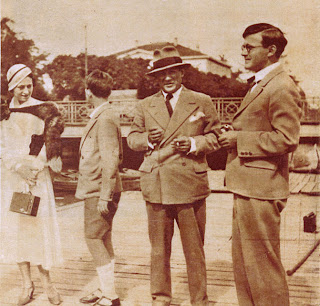

Thusis-route-Andeer Zillis in canton Graubünden, is one of the most outstanding for hiking in Switzerland. There's plenty to see and discover: castles, fortresses, picturesque villages, old paths that were used for trade with other countries, the Sistine Chapel in the Alps, two artistic bridges, gorges, cliffs, rivers and hot springs.


 Carschenna, an impressive and extensive throat, two suspension bridges. Five hours later you come to Zillis, where is the church of St. Martin or the Sistine Chapel in the Alps. The paintings are on your roof are original twelfth century. In Zillis can also visit the regional museum and lunch at one of the few restaurants.
Carschenna, an impressive and extensive throat, two suspension bridges. Five hours later you come to Zillis, where is the church of St. Martin or the Sistine Chapel in the Alps. The paintings are on your roof are original twelfth century. In Zillis can also visit the regional museum and lunch at one of the few restaurants. Almost two hours of waiting Zillis Andeer, friendly people whose main magnet are the thermal waters, conducive to recuperate. Hiking the entire route is longer, ending in the Italian town of Chiavenna and lasts about four to five days. It does not take a professional to do this kind hiking excursions in Switzerland, because of the impeccable organization and the facilities it offers. If for some reason you can not always continue your journey There is the possibility of taking some form of public transport. On the other hand, the signs are clear and that makes it difficult for one to lose. There are also restaurants and family stays where it is least expected, and hopefully, you'll find hot springs.
The Bridge on the Traversinertobel


Sistine Chapel of the Alps

Zillis is the obligatory stop for the thousands of visitors attracted by the old Romanesque paintings of biblical scenes Church of St. Martin. The 153 square images
 (9 rows of 17 panels), 90 cm in length and prepared first with a thin layer of plaster and painted in vertical position, are unique and well preserved (three photos above) . The church is small and decorated with simplicity and sobriety. The details of the paintings can be seen with the magnifying glasses that provide the same church. On the facade there is a large fresco (photo 1 side) and adjoining patio that borders a cemetery with some neighboring houses (photo opposite) .
(9 rows of 17 panels), 90 cm in length and prepared first with a thin layer of plaster and painted in vertical position, are unique and well preserved (three photos above) . The church is small and decorated with simplicity and sobriety. The details of the paintings can be seen with the magnifying glasses that provide the same church. On the facade there is a large fresco (photo 1 side) and adjoining patio that borders a cemetery with some neighboring houses (photo opposite) .  The Church of St. Martin is another of the Sistine Chapel in the world. Aside from this, and of the Vatican, the church of San Pedro de Andahuaylillas or the Sistine Chapel of America, 45 km from Cusco (side) .
The Church of St. Martin is another of the Sistine Chapel in the world. Aside from this, and of the Vatican, the church of San Pedro de Andahuaylillas or the Sistine Chapel of America, 45 km from Cusco (side) . Andeer The thermal guides

 Andeer is a district with a population of less than one thousand people who live mainly from tourism. The thermal waters, natural sources for seven centuries, contain minerals (strontium, magnesium, potassium) with healing powers, as its inhabitants. The pool is outdoors (photo
Andeer is a district with a population of less than one thousand people who live mainly from tourism. The thermal waters, natural sources for seven centuries, contain minerals (strontium, magnesium, potassium) with healing powers, as its inhabitants. The pool is outdoors (photo 














